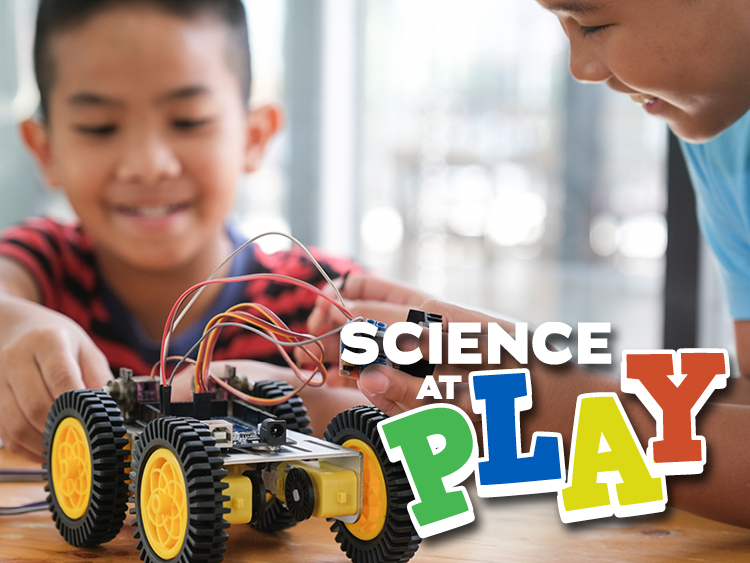Materials to Collect
- Unopened diet coke
- Mentos (any flavor)
- An outdoor space
- Old clothes
Try it!
- Place your new bottle of diet coke in a place you don’t mind soaking in diet coke.
- Take the cap off the bottle and drop some mentos in.
- Get out of the way!
What is the Science?
That foaming, fizzing, bubbling craziness erupting from the bottle is the result of a physical reaction. This means that the molecules involved are moved or rearranged, but they are not changed.
So how does this molecular rearranging happen? Diet soda (and all carbonated beverages) are saturated with carbon dioxide gas. That’s what gives it that signature fizzy taste. If all of that dissolved carbon dioxide was able to bunch up together, it would erupt from the bottle in bubbles and foam. This is where the mentos come in. Mentos candies are covered in tiny bumps and ridges that give the carbon dioxide a surface to collect and group together on. As those carbon dioxide molecules group together, they are forced up and out of the small bottle opening very quickly.
Create an Experiment
Now it’s time for the fun part – designing your own experiment! In order to do this, have your scientist(s) think of one component to change. This is the experiment’s variable. The variable could be something like the number of mentos dropped into the bottle, the flavor of diet soda, the size of the bottle, or the temperature of the soda. It doesn’t matter what your variable is, it just has to be one concrete thing that you can change.
Everything else in your experiment should stay the same. So for example, if I wanted to study how changing the number of mentos dropped into the diet coke affects the explosion, I would make sure that the size of the soda bottle stayed the same, the temperature of the soda stayed the same, the flavor mentos stayed the same, etc.
Finally, once you have figured out your variable (the thing changing) and figured out a way to keep everything else the same, you just have to figure out how to collect data. You need a way to track how changing your variable affects your outcome. Make sure your scientist(s) help figure this step out! For this experiment, you might choose tracking the height of your diet coke explosion or measuring how much diet coke is left in the bottle after.
When you’re all done, we would love to see your results! Share your data, your graphs, or your experiment videos with us using #ScienceAtPlay.

Aoife Ryle is a STEM Educator at the Connecticut Science Center. In addition to working with school groups, she works with our Teen Program, Overnights department, and shoots weekly science segments for WFSB. She has a degree in Bioengineering from the University of Maine and has a personal interest in the life sciences and engineering which makes bioengineering a perfect crossover.

Mark Dixon is a meteorologist on WFSB Channel 3 Eyewitness News and a host of the weekly Science Sunday segments with the Connecticut Science Center. He has been nominated for several Emmy awards for weather anchoring and has won awards from the Connecticut Associated Press Broadcaster’s Association and the American Meteorological society.



